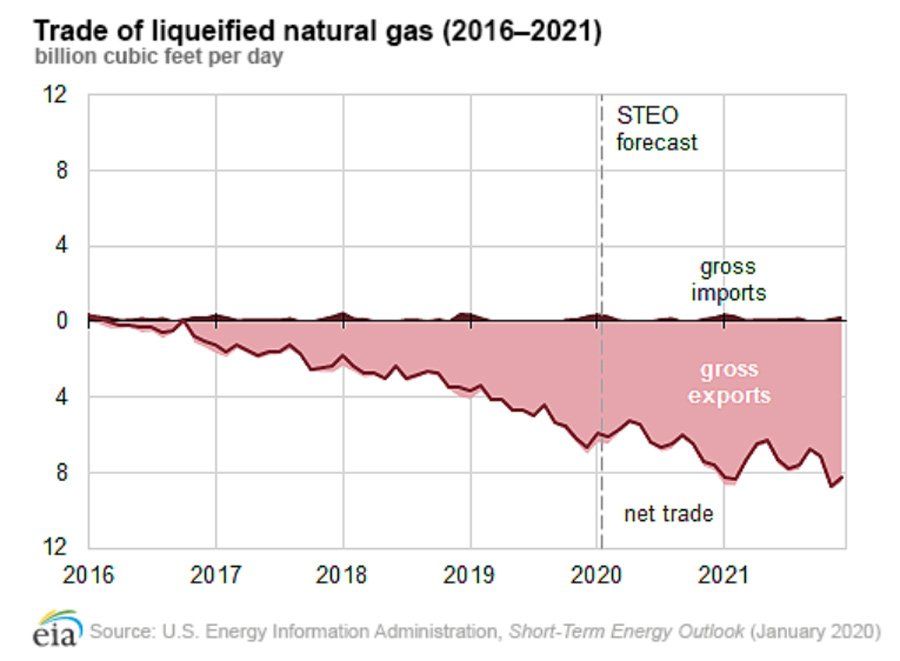U.S. Net Natural Gas Exports Grow Through 2021
John Plesnicar • January 17, 2020
The U.S. Energy Information Administration’s (EIA) Short-Term Energy Outlook (STEO) released this week forecasts the United States to remain a net exporter of natural gas through 2021. Net natural gas exports are forecast to average 7.3 billion cubic feet per day (Bcf/d) in 2020 and 8.9 Bcf/d in 2021, a 3.6 Bcf/d increase from 2019. In 2017, the United States became a net natural gas exporter on an annual basis for the first time in 60 years.
EIA noted strong natural gas export growth in recent years is mainly the result of increased exports of LNG. U.S. LNG exports averaged 5.0 Bcf/d in 2019, 2.0 Bcf/d higher than in 2018, as a result of several new facilities. In 2020 several new trains are expected to begin operations: Trains 2 and 3 at Cameron LNG in Louisiana, Train 3 at Freeport LNG in Texas, and six remaining Moveable Modular Liquefaction System (MMLS) units (Trains 5–10) at Elba Island in Georgia. In 2021, the third train at the Corpus Christi facility in Texas is scheduled to come online, bringing the total U.S. liquefaction baseload capacity to 10.2 Bcf/d. LNG exports are projected to continue to grow—averaging 6.5 Bcf/d in 2020 and 7.7 Bcf/d in 2021—as facilities gradually ramp up to full production according to EIA.
EIA also forecasts that pipeline exports will continue to grow through 2021. Gross U.S. pipeline exports rise from 7.8 Bcf/d in 2019 to 8.1 Bcf/d in 2020 and to 8.5 Bcf/d in 2021.
U.S. pipeline exports to Mexico began increasing after expansions of cross-border pipeline capacity were completed. From January through October 2019, U.S. pipeline exports to Mexico averaged 5.1 Bcf/d, which is 0.5 Bcf/d higher than the 2018 annual average, according to EIA’s Natural Gas Monthly. Several new pipelines in Mexico that were expected to come online in 2019 were delayed and are forecast to enter service in 2020. These pipelines include the 1.2 Bcf/d La Laguna–Aguascalientes and 0.9 Bcf/d Villa de Reyes–Aguascalientes–Guadalajara pipelines in Central and Southwest Mexico and the 0.5 Bcf/d Samalayuca–Sásabe in Western Mexico. Once these pipelines come online, U.S. pipeline exports to Mexico are projected to further increase.
Receive the most important LNG headlines in your email inbox each business day. Just sign up for our FREE LNG Headline Daily Newsletter.
Sign Up Here.


